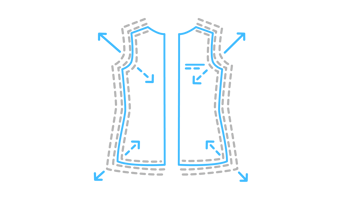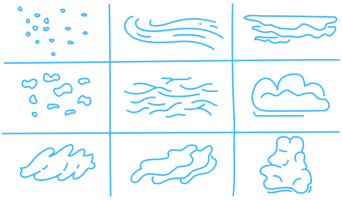Identifying opportunities for faster, standardized, quality-assuring and cost-efficient operations in your organization is only a first step. The companies that are the best at achieving operational excellence (OE) sustain the results of their initiatives by embedding operational excellence into their organizational structure.
The best companies in operational excellence reflect their OE strategy in an organizational structure that fits their industry and their key functions
How do you best achieve continuous operational excellence through organizational means? Our project work with Management Kits suggests that it depends!
It depends on various factors, including your current overall organizational structure, your organization's size, your industry, and your business model. It makes a difference whether you’re looking at operational excellence in services, in manufacturing, or in the pharmaceutical industry, because each context will have unique organizational requirements.
In services, for example, project organization is often a dominant organizational unit, whereas in manufacturing, process or product line organizations are more important. In pharmaceuticals, regulatory requirements with regard to quality are of particular importance.
In addition, the function that must achieve operational excellence determines the best organizational structure, as does the particular objective. For example, if you’re aiming to achieve a particular objective in operational excellence, such as quality, you will have to approach the work on organizational structure from that angle.
Or if your goal is to drive operational excellence in HR, you’ll have important strategic goals that will need to be supported by the organizational structure (e.g. business partner or employee orientation) in addition to operational excellence – which, in HR, often focuses on the administrative processes, e.g. recruiting and payroll.
The organizational approach to building operational excellence depends on its importance within the organization’s overall set of strategic objectives.
How to introduce operational excellence into your organizational structure and successfully implement it: a sequence of practical steps
The steps discussed below follow the Kit Board Canvas of the Organizational Structure Kit.
Work with the Organizational Structure Kit
to redesign your organization
Step 1: Align stakeholders on the goals and the scope of the operational excellence organization
Introducing operational excellence into your organizational structure should start with clearly defining both the strategic goals and the scope of your organization design work. The strategic goals for an operational excellence initiative should thereby be aligned with the overall enterprise strategy.
For example, the strategic leverage of operational excellence may come from standardization and modularization in one case, whereas in other cases the focus might be more on quality improvements.
In terms of scope, there could be cases where standardization and cost efficiency are focused on established products and services, while special projects in less well-known territory – which require a high level of innovation and new capabilities – are initially out of scope.
Step 2: Define the activities that will deliver operational excellence and continuous improvement
Once the scope of your work and the strategy are worked out, your strategy should be broken down into the specific tasks and activities that are necessary to execute it.
Some of these activities will be entirely new to the organization, while others may become more important than they have been, and will therefore require a new level of formalization, intensity, and capacity.
Key activities to build operational excellence typically include:
-
Development of a central platform and a roadmap for operational excellence
-
Structuring and detailing the priorities of an operational excellence initiative
-
Design and delivery of trainings
-
Identifying and introducing key methods for operational excellence, and tailoring this methodology to the specific context, industry, and function
-
Coaching and supporting projects and employees in implementing methods, such as value stream analysis, process mapping, and standardization of modules and process steps
-
Networking across the organization to ensure coherence of operational excellence activities along work processes end-to-end, and achieving buy-in of key organizational stakeholders (“connecting the dots”)
-
Fostering a company-wide culture of operational excellence by modelling and promoting the associated behaviors
-
Implementing central IT tools and databases to support the seamless introduction of standards along work processes
-
Measuring operational excellence by defining, tracking, and reporting KPIs to create transparency for management and other stakeholders
Step 3: Allocate activities to units to ensure ownership for operational excellence
Once you have defined the activities required for leading operational excellence, you can divide up and group these activities into units and according roles, starting with a number of generic grouping options that are plausible in your case.
Depending on your overall strategy, a focus on process improvement and operational excellence may have implications for your overall organizational structure.
For example, if you come from a functional organizational structure, where projects are handed over, back-and-forth between functions several times (leading to a lot of coordination and, potentially, fragmentation), you might opt to strengthen end-to-end ownership for process execution by creating multi-disciplinary teams, which could also assume direct responsibility for standardization.
Beyond the overall organizational structure, the question of a dedicated organizational function for operating excellence will often be a matter of centralization and decentralization – and the balance between the two. Ensuring consistency of operational excellence across the company will always require a certain level of centralization, e.g. through a central unit and a manager who assumes ownership of the initiative and builds the necessary knowledge and competencies.
Since there will always be trade-offs between the effort required for standardization and operational excellence, it is essential that this central function has a sufficient level of seniority (proximity to senior management) and capacity (ratio of resources dedicated to process excellence vs. resources in operations).
Step 4: Build links and ensure collaboration to guarantee operating and process excellence
Once you have decided on a unit structure (or have defined two or three sensible options), you need to consider the interfaces required to make operating excellence routine across the organization. For example, one key link to be considered is typically between a dedicated central function and its decentral counterparts within geographies, plants, or functional units along the value chain.
Design for operating excellence through building your operating excellence group
The Organizational Structure Kit gives you the framework, approach, and tools to define your organizational structure and make it fit for purpose, whether it’s the whole organization, select units, or organizing for a specific function or purpose. Check out the free preview below.
Boost organizational effectiveness
with Management Kits
Further reading
The dissertation by Nikolaus Lembke at the University of St. Gallen contains a nice collection of illustrative case studies of operational excellence organizations (page 100ff)



